This is a complete track list and a detailed explanation of each one. Each section includes historical context of the albums and a detailed breakdown of the music itself. I didn’t choose these songs based on how heavy they were, how progressive they were, how melodic they were, how epic they were, or anything like that. Each one was chosen because of how it represented the musical state of the band at the time each album was released. In some cases that just happened to be my favorite song, but that was never my reason for choosing any of them.
Intro
This track includes one song from every album, all of which are the introductions or the lead-ups to important musical phrases. If you know Dream Theater well enough and you have a decent sound system, you should be able to recognize all of them if you listen carefully enough. It does get pretty hectic towards the end, but that’s just a hint at what’s to come.
 “The Ytse Jam” from When Dream and Day Unite
“The Ytse Jam” from When Dream and Day Unite
This was their first album, and it included the three core members of the band that have remained since the beginning. Their original singer, though talented in his own right, was not fated to be a permanent part of the band. This track is the only instrumental one, but I didn’t pick it because Charlie wasn’t on it. Unlike most music at the time, this song was purely progressive. There was no swinging rock beat, no wailing vocalist, no grinding metal guitar, and sonically it’s one of the cleanest tracks on the album.
Recorded in the late 80’s, this album is a product of its environment. But this track stands out in a way that would eventually come to define Dream Theater’s music. Complex and full of energy, it’s one of the only songs that still gets played at every concert. Aside from being arguably the best track on the album, it set the precedent for the Dream Theater instrumental piece, a staple of almost every album afterward.
 “Learning to Live” from Images and Words
“Learning to Live” from Images and Words
As grunge music was poised to make its big introduction into the world, hair bands were beginning to find their audience less enthused by screeching vocals and glam rock. Obscure garage bands were becoming pop stars and metaaaaaal (a la Ronnie James Dio) was quickly becoming harder to sell. Rather than follow either trend, Dream Theater continued to make their own kind of music. Armed with a new vocalist who displayed more range and clarity than his contemporaries, they produced an instant classic. Their most commercially-successful track ever (“Pull Me Under”) is on this album, but I felt it didn’t belong on Ytsevolution.
Right from the beginning, this track is different than most rock songs. Each instrument has its own rhythm that seems to conflict with one another, but it comes together perfectly like an ensemble truly should. The lyrics, courtesy of the “silent man” in the band, are cryptic but obvious, mesmerizing and insightful. LaBrie’s vocals are clear and soaring, a noticeable change from their previous album (not to mention far and beyond anything else at the time). The band plays a tight arrangement and seems unusually focused for a “rock” band. You can actually whistle along from beginning to end, especially fun during the moments when the guitar and keyboards trade off taking and sharing the lead. Maybe it was because I was an impressionable teenager when I first heard it, but the overall mood of this song feels optimistic, and it was a novel way of looking at rock music. Throw in a positive message, and you’ve got the makings of a classically-memorable song.
 “Scarred” from Awake
“Scarred” from Awake
When I first heard this album, my tastes were heavier than they are now. So, I never really gave this song a chance because I was busy jamming out to the other significantly heavier songs. But looking back I have always enjoyed this song and easily consider it one of the best on the album. It wasn’t until they played it on tour that I really started to fall in love with it. In the context of the album I feel it represents Awake very well. It has moments of intense metal like any other track, but it maintains that clear melodious sound that reminds me so much of the previous album. Rather than switch to a different style completely, they simply melded the two together. In many ways that’s what drives Ytsevolution. Rather than doing the exact same thing every album or changing styles every album, Dream Theater has constantly evolved its sound.
 “Burning My Soul” from Falling into Infinity
“Burning My Soul” from Falling into Infinity
This is probably the most commercial album they’ve ever released, and this track is probably their most commercialized one. Don’t get me wrong: I dig it. But this was the point when they were making their big return after losing their first keyboardist (one of their main songwriters) and they were still trying to find the massive appeal their fans felt they so richly deserved. There was a relatively long gap between the previous album and this one, and the anticipation from the fans was at a fever pitch. In many ways, this is a straightforward heavy rock song, with glitzy keyboards (provided by their newest and flashiest member, Derek Sherinian), a memorable and aggressive hook, and a highly produced sound. This was the the first (and only) Dream Theater song I’ve ever heard on our local rock station. Fortunately, commercial success with the classic rock fans was never something that motivated the band.
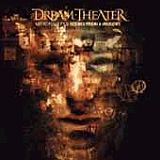 “Beyond This Life” from Scenes from a Memory
“Beyond This Life” from Scenes from a Memory
Probably the most anticipated album in Dream Theater’s twenty year history, Scenes from a Memory burst forth into the stereos and computers of fans like mana from heaven. After picking up their third keyboardist, Jordan Rudess, the band’s makeup locked into configuration that lasted for several years. Rudess fit so well with them that it’s a shame he hasn’t always been a member. Of course, that would of robbed us of the other two great keyboardists, but fans couldn’t have been happier with the choice. He could mimic John Petrucci flawlessly, allowing them to do completely ridiculous things like trade off sets of 32nd notes. But he had his own distinct style, something you’ll notice every time the song breaks down into an old ragtime moment.
This song has everything that would become a staple of Dream Theater’s music: steady rock, heavy riffs, sudden time changes, smooth melodies, backup vocals from the other members of the band, a discernible story line, progressive music arcs, and frakking wacky solos. On top of it all, during the great breakdown, they pay homage to the late, great Frank Zappa just to show the world that musicians haven’t forgotten how important it is to play oddly-unforgettable, seemingly-random music before a live audience.
Even if you can’t keep up with the soloists in this song, you can feel the beat the whole time. And even if you can’t keep the constantly-changing time signatures straight, you can still feel where the song is going. That aspect of Dream Theater has always been one of my favorite things about their music.
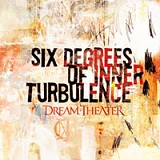 “Blind Faith” from Six Degrees of Inner Turbulence
“Blind Faith” from Six Degrees of Inner Turbulence
After the critical success of their last album, Dream Theater pumped out a two-disc monster in the time it takes most bands to collect addictions and implode. This is the point in Ytsevolution where the music picks up steam and doesn’t let up for at least half an hour. Every time I hear this song begin, I can’t help but feel excited. It may start out smooth and steady, but I know what’s coming. This is a great example of the “progressing chorus,” something that I absolutely adore about Dream Theater. When LaBrie’s voice first begins to wail the chorus, it’s haunting and powerful. But it’s just a tease for the rest of the song. You only get a few bars before they drop back into the main melody. And each time they come back to the chorus, they give you a little more. By the time they give you the entire chorus, it’s just a launching point for the progressive breakdown that is their forte.
Another great thing about this song (and the album in particular) is the content. It is strikingly different from anything they have done before. It’s concerned but hopeful, socially-aware and critical. Dream Theater has close ties to New York, and clearly the events of 9/11 affected more than just how politics worked; it changed how Dream Theater thought about their world and felt about their music. This entire album is about people and how they deal with the world, and this track is about how we deal with dealing. It’s not as emotional or destitute as some of the tracks on this album, and actually has a spiritually uplifting sound.
You can interpret what they’re saying as being pro-or-anti-God, but I don’t think that’s what they had in mind. Seems to me (and I’m just speculating) that it has more to do with how to deal with life, whether through an unflinching faith or through an acceptance that faith alone cannot serve everyone. Either way, the very fact that this is a topic of discussion in a Dream Theater album is testament to this particular step in their evolution.
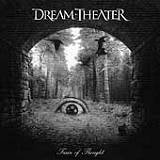 “Endless Sacrifice” from Train of Thought
“Endless Sacrifice” from Train of Thought
The transition between these two tracks is the moment that inspired this entire project. My music player had been randomly selecting and blending their entire discography for months, so it’s not surprising that these two tracks happened to overlap. But it was the way they overlapped that caught my attention. I immediately grabbed my audio editor and inserted those two tracks and started tweaking it.
I didn’t have to do much. The sounds that ended the previous song and began this one (which seemed almost random) were in the same key and clicked right into place as though they planned it that way. I felt like Robert Langdon from the Da Vinci Code, except…ya know…waaay cooler.
The thing was, they didn’t just overlap perfectly, those two songs were two of my favorite Dream Theater songs ever. They both had great and deliberate introductions that were longer than most of the crap I was ignoring on the radio back then. But they weren’t long for length’s sake. They drew you into the mood of the song at a steady pace before the progressive rock kicked in. And when it did, you have quintessential Dream Theater.
To some people it probably sounds like they’re just playing random riffs, but they clearly have a goal and they head for it full-speed until they arrive back where they started. They tear through heavy riffs, trade off with insane-but-coherent solos, lighten the mood with a Rudess moment, followed immediately by one of the heaviest moments in the song (just to show they don’t take the heavy stuff too seriously), and basically indulge the listener’s musical needs for several minutes.
After Rudess and Petrucci lock into place, they finally fall back into the music that led up to the breakdown only to end with the chorus they were teasing you with at the beginning. The music drives so hard and so fast that I felt it just couldn’t let up, which leads us directly into the next track…
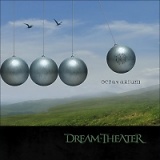 “Never Enough” from Octavarium
“Never Enough” from Octavarium
Again, the way this song begins and the previous song ends makes me wonder if those genius bastards were doing this on purpose. Here was a third song that seemed to overlap without me having to tweak it much. Just adjust their positions, fade in and out, feel the beat, and click! By the time this song came out, Ytsevolution seemed to be taking on a life of its own. This track (like the previous two) displayed musical prowess on all fronts, an increasingly fierce attitude, an absolutely delicious vocal performance by LaBrie, and (thankfully) an obligatory progressive breakdown, the hallmark of all great Dream Theater songs.
This track doesn’t follow the convention of the previous two of a long and drawn out intro with the evolving chorus. Instead, it dives headlong into the progressive and rocks from beginning to end. The only complaint I could have is that this track doesn’t go on for hours. It’s one of the shortest songs on Ytsevolution, but please don’t think I’m implying that it’s missing something. If anything, that’s probably one of the reasons why I put this compilation together in the first place. I wanted one long Dream Theater song that never repeated itself while spanning their truly epic career.
 “The Ministry of Lost Souls” from Systematic Chaos
“The Ministry of Lost Souls” from Systematic Chaos
Melodically, this is unquestionably one of their best songs. By this time in their musical growth, you can tell that these guys were (at least subconsciously) moved by things other than just the intensity of being a young male. They were all married men with children and wives, and you can really feel their maturity in the melodies. They start to incorporate lush harmonies and engaging chord progressions, having long since elevated progressive rock to previously un-imagined heights. They have never lost their edge, a point that several moments in this song clearly demonstrate. But now they’re composing symphonies with their music. The chorus of this song has more than just a hook; it has a deep and abiding beauty that sets it apart from virtually all other progressive rock. This song is what the progressive rock ballad should be.
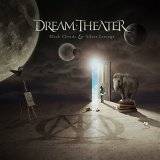 11. “The Count of Tuscany” from Black Clouds & Silver Linings
11. “The Count of Tuscany” from Black Clouds & Silver Linings
This song proves to me that the rhapsody is no longer just the domain of the bohemians and the Broadway musicals. It now also belongs to Dream Theater. The storyline is easy to follow and it doesn’t detract from the music. In fact, it lends itself to the whole experience. This song is the current culmination of all that Dream Theater has accomplished up until this point. Unforgettable melodies, stop-motion progressive riffs, soaring vocals, roaring backup vocals, intensity, clarity, and a sensitive awareness of the dynamics of the listener’s mood. Even if you can’t understand what he’s saying (as a large percentage of Dream Theater fans ironically experience) you feel the rise and fall of the story arch. The almost magical breakdown, what I consider the final act of the piece, shows you once again that John Petrucci can make his guitar sing as well as he can make it scream. And the close, intimate sound of LaBrie just reminds me that no one could ever have taken his place. By the end of this track, I feel so emotionally drained that I’m irrationally fearful that it might be their last song.
Please note: The following song has no description yet, but I’ll update it soon.
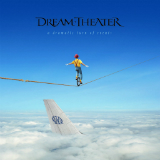 “Breaking All Illusions” from A Dramatic Turn of Events
“Breaking All Illusions” from A Dramatic Turn of Events
Lorem ipsum dolor sit amet, consectetur adipisicing elit, sed do eiusmod tempor incididunt ut labore et dolore magna aliqua. Ut enim ad minim veniam, quis nostrud exercitation ullamco laboris nisi ut aliquip ex ea commodo consequat. Duis aute irure dolor in reprehenderit in voluptate velit esse cillum dolore eu fugiat nulla pariatur. Excepteur sint occaecat cupidatat non proident, sunt in culpa qui officia deserunt mollit anim id est laborum.
Lorem ipsum dolor sit amet, consectetur adipisicing elit, sed do eiusmod tempor incididunt ut labore et dolore magna aliqua. Ut enim ad minim veniam, quis nostrud exercitation ullamco laboris nisi ut aliquip ex ea commodo consequat. Duis aute irure dolor in reprehenderit in voluptate velit esse cillum dolore eu fugiat nulla pariatur. Excepteur sint occaecat cupidatat non proident, sunt in culpa qui officia deserunt mollit anim id est laborum.
The following song has not been added to the mix yet, so I’m just filling this space to entice people to come back later. The newest version will be out sometime this year.
 “Illumination Theory” from Dream Theater
“Illumination Theory” from Dream Theater
Lorem ipsum dolor sit amet, consectetur adipisicing elit, sed do eiusmod tempor incididunt ut labore et dolore magna aliqua. Ut enim ad minim veniam, quis nostrud exercitation ullamco laboris nisi ut aliquip ex ea commodo consequat. Duis aute irure dolor in reprehenderit in voluptate velit esse cillum dolore eu fugiat nulla pariatur. Excepteur sint occaecat cupidatat non proident, sunt in culpa qui officia deserunt mollit anim id est laborum.
Lorem ipsum dolor sit amet, consectetur adipisicing elit, sed do eiusmod tempor incididunt ut labore et dolore magna aliqua. Ut enim ad minim veniam, quis nostrud exercitation ullamco laboris nisi ut aliquip ex ea commodo consequat. Duis aute irure dolor in reprehenderit in voluptate velit esse cillum dolore eu fugiat nulla pariatur. Excepteur sint occaecat cupidatat non proident, sunt in culpa qui officia deserunt mollit anim id est laborum.
14. Outro
Just like the intro to Ytsevolution, this track contains one song from each album. This time, however, the tracks overlap in reverse order. There are so many grand conclusions to their songs that I couldn’t possibly pick one to represent them. So I took the liberty of making one up. It’s not that I believe I know how to end an album better than my musical idols, but rather that I want to re-experience their career all over again. This track begins at the most recent album and works its way back to the very beginning. It’s meant to remind the listener of just how far they have come. I don’t see Dream Theater going into retirement after their self-title album is released, but if they do, they can take pride in the incredibly rich and plentiful catalog that they have sustained over the past quarter century.